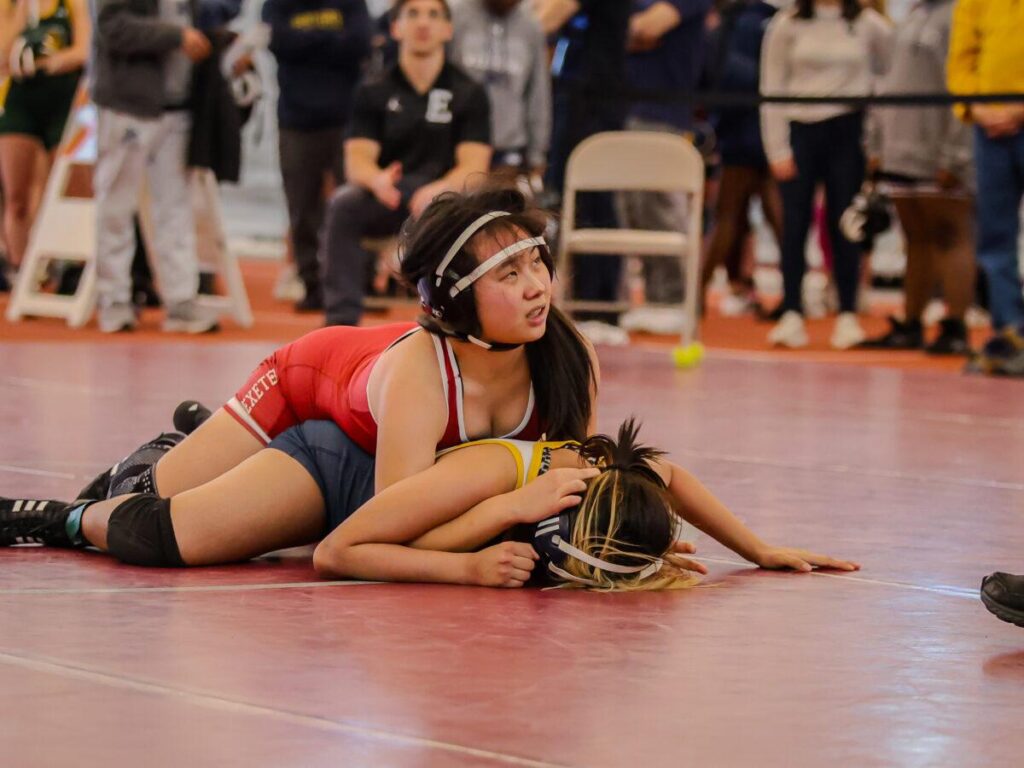Girls’ wrestling is rapidly gaining momentum in Georgia high schools, with participation numbers and competitive opportunities reaching new heights. As more young female athletes take to the mats and programs expand statewide, questions arise about the future of girls’ wrestling beyond high school-specifically, whether colleges will embrace and support this growing sport. This article explores the explosive growth of girls’ wrestling in Georgia and examines the challenges and prospects for its advancement at the collegiate level.
Girls Wrestling Participation Surges Across Georgia High Schools
The landscape of high school wrestling in Georgia is undergoing a significant transformation as more girls step onto the mats each season. Coaches and athletic directors report an unprecedented influx of female wrestlers, attributing the surge to growing local awareness and supportive school programs. Stateside statistics reveal that over the past five years, girls’ participation in wrestling has increased by nearly 150% in the Peach State, signaling a broader cultural shift toward gender inclusivity in traditionally male-dominated sports.
Despite the encouraging growth at the high school level, the question remains whether collegiate programs will keep pace with this emerging talent pool. Current opportunities for female wrestlers at NCAA schools are limited, but initiatives pushing for dedicated women’s wrestling scholarships and expanded competitions are gaining traction. Key factors influencing this potential shift include:
- Increased high school participation rates creating a larger recruitment pool
- Growing advocacy for women’s wrestling at national and collegiate levels
- Title IX considerations encouraging institutions to expand female sports programs
| Year | Girls’ Participation (GA) | Collegiate Wrestling Programs |
|---|---|---|
| 2019 | 450 | 5 |
| 2021 | 780 | 7 |
| 2023 | 1,120 | 9 |
Challenges Facing College Programs in Supporting Female Wrestlers
Despite the rapid growth of girls’ wrestling at the high school level in Georgia, many college programs remain hesitant or ill-prepared to fully embrace female wrestlers. Budget constraints and limited resources often impede the development of dedicated women’s wrestling teams, forcing many talented athletes to choose between competing on men’s teams or foregoing collegiate wrestling altogether. Additionally, lack of coaching expertise in women’s wrestling and inadequate recruitment efforts contribute to the slow pace of institutional support. Schools must grapple with Title IX considerations while also responding to growing demand, creating a complex landscape where progress is often incremental rather than transformative.
Structural challenges also persist, including insufficient match opportunities and limited scholarships specifically earmarked for female wrestlers. Many colleges still lack clear pathways that enable seamless transition from high school to collegiate wrestling, which discourages prospective student-athletes. Below is a snapshot of common barriers faced by female wrestlers entering college programs:
| Challenge | Impact |
|---|---|
| Insufficient funding | Limits team size and resources |
| Coaching scarcity | Less specialized training for female athletes |
| Title IX complexities | Hesitancy to add women’s teams due to compliance concerns |
| Lack of recruitment focus | Fewer athletes aware of collegiate opportunities |
| Competitive opportunities | Scarce dedicated women’s matches and tournaments |
Expert Perspectives on Expanding Opportunities for Women in Wrestling
Leading voices in wrestling emphasize that the surge in girls’ wrestling participation in Georgia is more than a fleeting trend-it’s a paradigm shift challenging decades of tradition. Coaches, athletes, and advocacy groups agree that expanding opportunities requires systemic support, including increased funding, dedicated training programs, and visibility at the collegiate level. According to Georgia Wrestling Association president, Tara Simmons, “Investment in female wrestling at the high school level has skyrocketed, but without parallel commitment from colleges, these young athletes face a bottleneck when advancing their careers.”
The path forward involves collaboration between educational institutions, governing bodies, and sponsors to create sustainable pipelines. Experts suggest critical steps such as:
- Developing scholarship programs specifically for female wrestlers.
- Integrating women’s wrestling teams into more college athletic departments.
- Launching awareness campaigns to cultivate fan engagement and media coverage.
- Implementing mentorship initiatives pairing high school athletes with collegiate and professional wrestlers.
| Stakeholder | Role in Expansion | Current Status |
|---|---|---|
| High Schools | Set foundation; introduce programs | Rapid growth in girls’ teams |
| Colleges | Offer scholarships and competition | Limited but increasing opportunities |
| National Associations | Regulate and promote the sport | Developing female-focused initiatives |
| Sponsors | Provide financial backing | Growing interest in women’s wrestling |
Strategic Recommendations for Colleges to Embrace Growing Talent Pool
To fully capitalize on the surging interest and talent in girls’ wrestling across Georgia, colleges must proactively develop inclusive recruitment strategies. Establishing dedicated scouting programs that attend high school matches and regional tournaments can help identify promising athletes early. Additionally, fostering partnerships with local wrestling clubs and high school coaches will create a streamlined pipeline for talented wrestlers to transition into collegiate programs. Embracing flexible scholarship models, including partial and need-based scholarships tailored to this emerging sport, can make college wrestling more accessible and competitive.
Strategic areas for institutional focus include:
- Investment in coaching staff specifically trained in girls’ wrestling techniques and athlete development.
- Facility upgrades to provide equal training resources for women’s wrestling teams.
- Marketing initiatives aimed at increasing visibility and fan engagement around women’s wrestling events.
- Collaboration with governing bodies to align collegiate programs with national standards and competitions.
| Action Item | Expected Impact | Timeline |
|---|---|---|
| Recruitment Camps | Identify top prospects early | Next 6 months |
| Scholarship Funding | Increase athlete enrollment | 1 year |
| Coach Development | Improve competitive edge | Ongoing |
Concluding Remarks
As girls’ wrestling continues its rapid growth at the high school level in Georgia, the question remains whether collegiate programs will expand to meet this surge in talent and interest. While state championships and participation numbers signal a promising future, the path to widespread college opportunities for female wrestlers is still unfolding. Stakeholders across athletics and education will be watching closely, as the next steps will be crucial in determining whether the momentum on the mat translates into lasting institutional support at the collegiate level.





